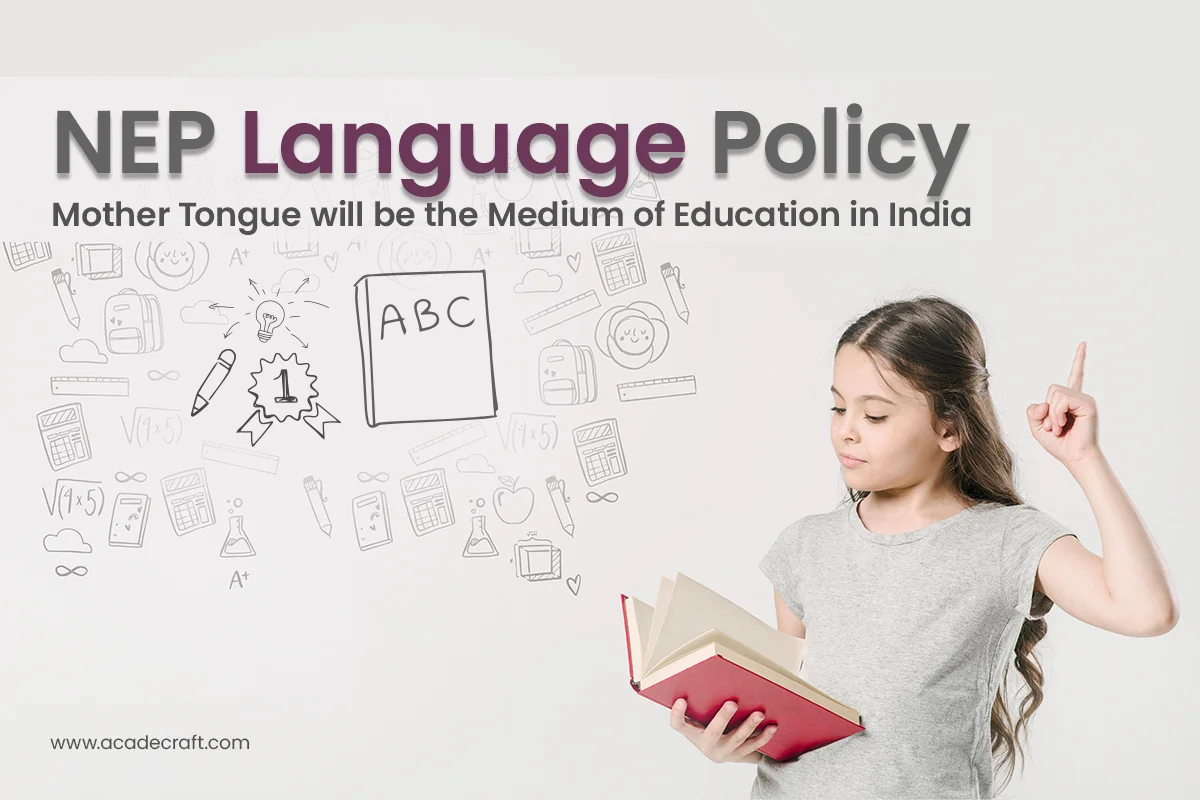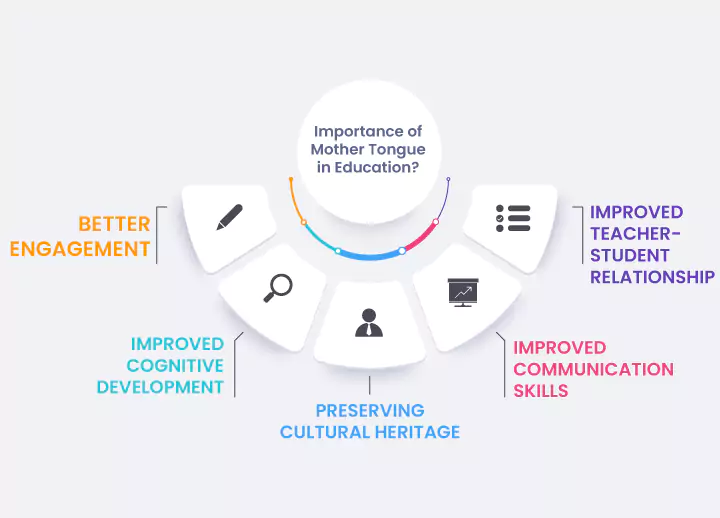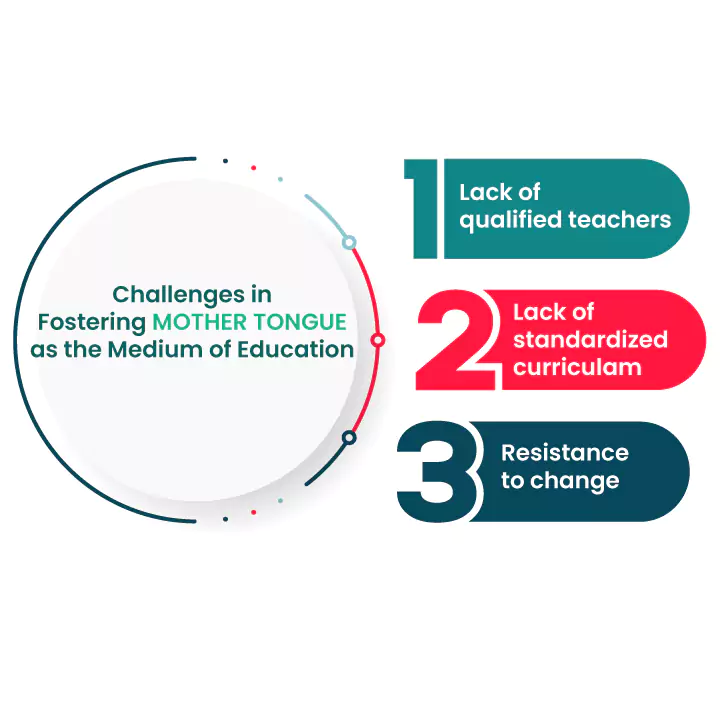
India is a growing nation and is determined to be known as a source of knowledge globally. For the past few years, the Indian government has been working to transform the traditional education model into a modern ed-tech framework, intending to become the greatest knowledge source. In the process of making it possible, the importance of the mother tongue in education has been discovered.
The discovery has led to the introduction of the mother tongue in foundational education under the Indian school curriculum. It has opened new doors for students and has enabled them to learn more effectively. It has also helped to bridge the gap between the traditional and modern education systems.
The National Curriculum Framework 2022 recommends that children be instructed in their Matribhasha (mother tongue) until they are eight.
Section 29(f) of Chapter V under the Right to Education Act, 2009 unquestionably states that the "medium of instructions shall, as far as practicable, be in child's mother tongue."
The knowledge transformation in regional languages has enabled students to understand the subject matter better and improve their overall learning experience.
For instance, making sure kids eat the right foods, communicating in their mother tongue to expand their vocabulary, or telling them morally upright or historically accurate historical stories.
The National Education Policy 2020 advocates that "wherever possible, the medium of education will be the mother tongue/local language/regional language until at least Grade 5, but preferably until Grade 8 and beyond," both in public and private schools.
NEP also emphasizes the importance of e-learning in a child's K-12 learning, and we can guarantee that the blend of ed-tech learning in a child's native language could increase their chances of success.
A given class may have students who speak more than one native language, but teachers are not hired based on the languages they understand, speak, and write. Resources are not always available in the regional dialects that the child understands.
The Ministry of Education has prioritized developing and implementing a curriculum framework to realize the advantages of learning in one's mother tongue in the classroom while maintaining the National Education Policy 2020's recommendations. Indian languages are being promoted and growing, so a "high-powered" committee has been established to study the issue and make recommendations.
For example, the Indian Government's initiative- The DIKSHA portal, offers course materials for Grades 1-12 in Indian Sign Language and 32 other Indian languages. Here, textbooks and teaching resources are also available.
By providing such a comprehensive library of resources, the DIKSHA portal makes it easier for teachers to create inclusive learning environments, giving students the valuable opportunity to learn in their native language.
Various research and evidence have shown that teaching children in their mother tongue, particularly during the foundational years (ages 3 to 8), results in higher retention, higher proficiency, less exaggerated grades, and improved test scores.

We must reject the "do or die" strategy of submersion to create a learning environment focused on the needs of the students.
Students who learn in their mother tongue are more engaged in the learning process. It is because they can understand the content more effectively and are more interested in the subject matter, leading to better learning outcomes and helping reduce dropout rates.
UNESCO research shows that 40% of the global population lacks formal schooling in a language they are familiar with.
It has also shown that students who learn in their mother tongue can better grasp concepts and retain information. They are more familiar with the language and can understand it better than a foreign language.
By promoting the mother tongue as the medium of instruction, students can develop their cognitive abilities more effectively, leading to better learning outcomes.
Promoting the mother tongue as the medium of instruction will help preserve the country's cultural heritage. By learning in their native language, students will be able to understand and appreciate their culture more effectively. It will help in promoting social cohesion and national unity.
Learning in one's mother tongue can help students develop better communication skills since they are more comfortable expressing themselves in their native language and can understand the nuances of the language more effectively. It will not only assist them in their academic pursuits but will also be beneficial in their personal and professional lives.
For instance, students who learn in their native language can better read and understand complex texts, which can help them succeed in college and their future careers.
Teachers who teach in the mother tongue can better connect with their students. Since they can communicate more effectively and understand their student's needs and requirements more effectively, it will lead to a more positive learning environment, which is essential for the overall development of students.
We have noticed that blending technology with localization in foundational education can make learning more interactive and engaging, allowing students to understand the topics and entire educational material sufficiently.
As an e-learning service provider, we fully support the initiatives and objectives of the FLN National Education Policy and believe that promoting the mother tongue as the medium of instruction will benefit students, teachers, and the education system.
Interesting Read: A Comprehensive Guide to National Education Policy in India
E-learning can play a critical role in promoting the mother tongue/local language/native language as the medium of instruction. Here are some ways in which e-learning can facilitate the implementation of this policy:
E-learning platforms can make learning more accessible to students who live in remote areas or who do not have access to quality education. The NEP content development in regional languages, schools, and institutions can ensure that students in these areas can also learn in their mother tongue, leading to better learning outcomes and improved social mobility.
Educational Institutions can collaborate with ed-tech providers to create content in multiple languages, including regional ones. It will help in making learning more accessible to students who are not proficient in the English language. By creating content in regional languages, schools can ensure that students can learn in their mother tongue, leading to better learning outcomes.
Educational institutions can provide personalized learning experiences through eLearning platforms for students learning multiple languages. Using data analytics and artificial intelligence, e-learning service providers can create personalized learning paths for students based on their learning styles, preferences, and strengths. This personalized approach will help improve learning outcomes and ensure that students can learn at their own pace.
Training teachers on teaching in regional languages will help improve the quality of education. It will also help promote the use of the mother tongue or the child's native language as the medium of instruction. For instance, in the Indian states of West Bengal and Kerala, the state governments have recently started training teachers on teaching in regional languages such as Bengali and Malayalam, respectively.
Digital platforms can facilitate collaboration between students and teachers who speak different languages. Using features such as real-time translation and collaborative tools, institutions can create an environment where students and teachers from different regions can work together to achieve common learning goals.
While promoting the mother tongue as the medium of instruction has several benefits, it also poses some challenges. Here are some of the challenges that need to be addressed to implement this policy effectively:

Lack of qualified teachers: One of the major challenges in promoting native language as the medium of instruction is the lack of qualified teachers proficient in regional languages. There is a shortage of qualified teachers, particularly in rural areas, where teachers may not be familiar with the local language. Addressing this challenge will require a concerted effort from the government and other stakeholders.
Lack of standardized curricula: Another challenge is that the lack of standardized curricula in regional languages makes it difficult to ensure that students are receiving the same quality of education regardless of the language they are learning in. Addressing this challenge will require the development of standardized curricula that can be used across different regions.
Resistance to change: There may be resistance from some sections of society to the promotion of the mother tongue or native language as the medium of instruction. It may be due to a perception that learning English is necessary for success in the modern world. Addressing this challenge will require a sustained effort to enlighten the public about the advantages of learning in regional languages.
Also Read: 5 Core Elements of National Education Policy
The importance of Mother Tongue in education as per the National Education Policy is now known to you. It is a decisive step towards advancing education in a child's mother tongue in schools.
As an e-learning service provider, we fully support this policy and believe that e-learning can be critical in facilitating its implementation. By creating content in regional languages, providing personalized learning experiences, and using technology-enabled assessments, we can help improve learning outcomes and promote the usefulness of the mother tongue/local language as the medium of education.
While some challenges must be addressed, promoting it far outweighs the benefits.
References:
Global Education Monitoring Report
Share